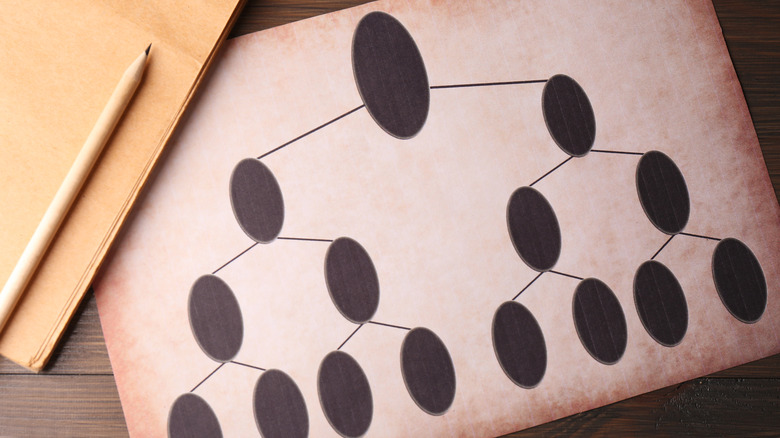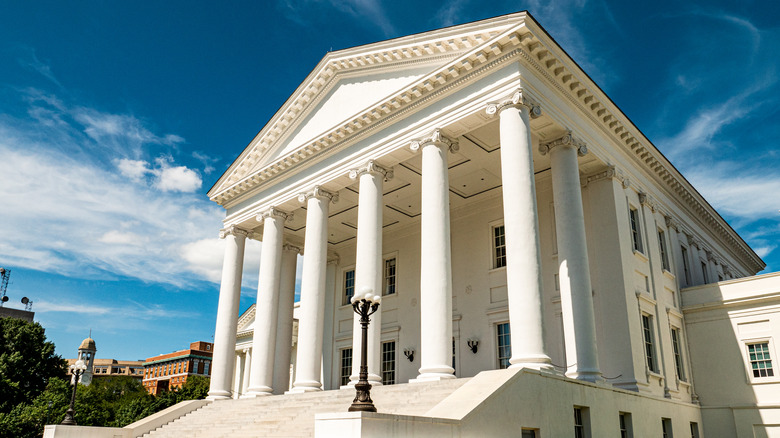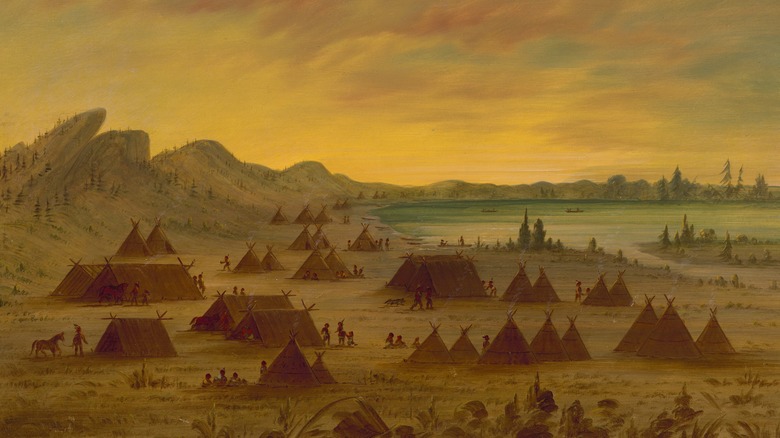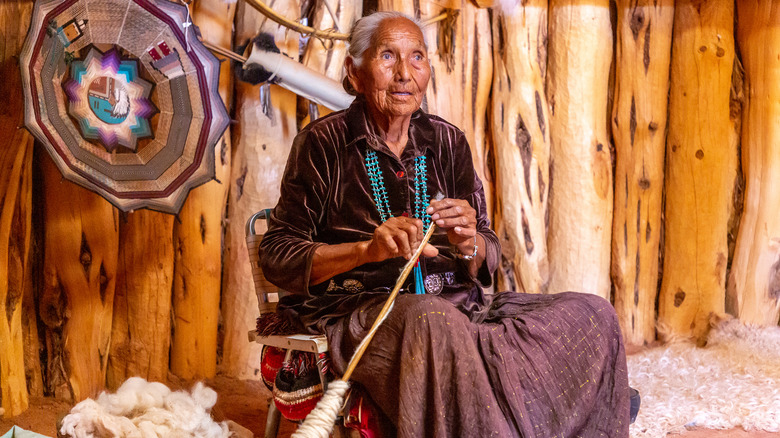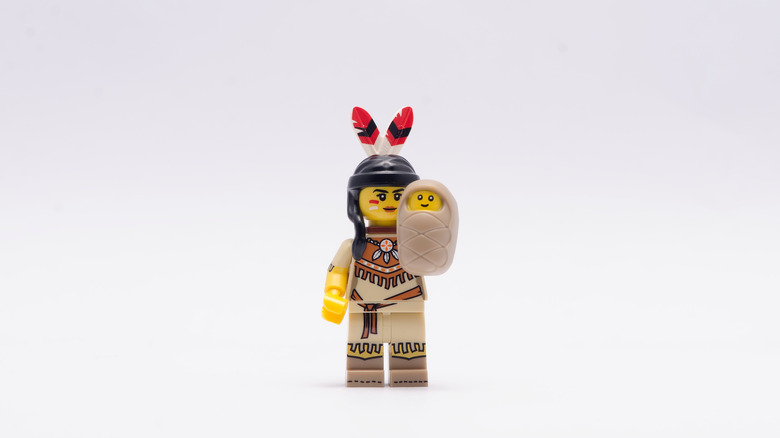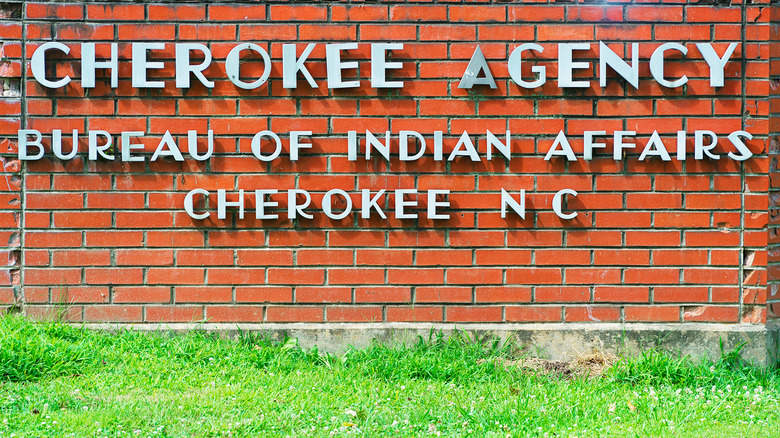Blood Quantum Laws In America Explained
America's blood quantum laws define who is and is not a member of a Native American tribe, based on their family line. According to blood quantum rules, native blood is "diluted" by non-native blood — and those who do not pass certain minimum thresholds are ineligible for membership in certain nations (via NPR). But centuries of marriage with other ethnic groups have made blood quantum an increasingly fraught issue, especially given that the legislation that originally put such requirements in place was undeniably racist. Blood quantum laws raise difficult questions about how national and racial identity should be defined — is identity chosen or inherited? Can a person really "dilute" their identity?
Many people have labeled blood quantum laws as genocidal due to fears they will gradually diminish the number of Native Americans over time (via the Native Governance Center). On the other hand, around 70% of "federally recognized Native nations that share geography with the United States" have opted to keep blood quantum laws for a variety of reasons. Having at least 25% native blood is still the main requirement for most Nations (via the BBC).
Origins
Something resembling blood quantum was first introduced to America during the 18th century via the state of Virginia (via the BBC). These early blood quantum rules were discriminatory — anybody with 50% or more Native American blood was seen as less than under the law. By 1884, blood quantum laws were applied nationwide via census rolls by the Bureau of Indian Affairs (via the Native Governance Center). Today, the BIA is still in charge of handing out blood quantum certificates.
As Native Americans increasingly found themselves becoming members of nations within a nation, determining who was and was not of native ancestry became more of an issue — those with Native American blood were entitled to grants of land, for example, and they were treated differently according to various treaties. While today we have the benefit of DNA tests, in the 19th century, government officials seem to have mostly guessed peoples' ancestry based on physical traits as well as their level of involvement with First Nations groups (via NPR).
Rules regarding blood percentage were only formerly adopted by tribes themselves in the 1930s after the Indian Reorganization Act was passed. As Native Americans increasingly went their own way, many First Nations groups adopted blood quantum as a membership policy (via VOA News).
What happened before blood quantum?
Some argue the switch to blood quantum was forced upon tribes by the federal government (via California Law Review) and was never in line with how Native American tribes conceptualized their own tribal identity. Before quantum was widely used, becoming a member of a Native American tribe was similar to becoming a member of any other nation — membership was defined by culture, kin, and feelings of identity. It was once possible to join many First Nation groups through marriage, for example (via the Native Governance Center). The idea that Native Americans are a "race" rather than a nation is arguably a colonial invention.
Historically, Native American tribes have also been much more racially diverse than might be expected. Some African Americans joined tribes to escape enslavement, while many others were kept enslaved by select Native American tribes. They subsequently became tribe members after the end of the Civil War (via The New Yorker). Similarly, in the early days of colonial America, white women and children were occasionally kidnapped and adopted by Plains Indians, changing the genetic makeup of the tribe (via History).
Problems
Critics of blood quantum argue that applying such strict rules for membership will inevitably destroy Native American tribes completely. According to the Native Governance Center, this is borne out by statistical projections indicating that many tribal groups will see a rapid decline in numbers in the near future. Aside from demographic issues, blood quantum rules also put many Native Americans in a difficult situation in regard to love and marriage. Many people feel obligated to date within their tribe — falling in love with a person of another race could mean their children do not get to partake in their Native American heritage (via NPR).
Changing blood quantum rules would be an easy way to ensure the survival of Native American communities. Back in 2004, a suggested proposal to lower the blood quantum for the Navajo Nation from ¼ to ⅛ would have almost doubled tribal membership from 310,000 to 600,000 (via Indianz). Similarly, a 2011 study found that although there were only 16,924 registered members of the Blackfeet Nation, over 105,000 people claimed to have Blackfeet ancestry in the census (via Great Falls Tribune).
Native Hawaiians, like Native Americans, also deal with significant issues caused by blood quantum measures. In Hawaii, a 50% blood quantum comes with significant land rights, and the issue of blood quantum has resurfaced repeatedly as part of a tense political debate surrounding land use (via Public Radio Hawaii).
Blood quantum and pretendians
For all the problems blood quantum causes, many people are still in favor of it, arguing that it has preserved Native American culture, protecting it from half-hearted pretenders (via the Native Governance Center). A few tribes even enforce a very high blood quantum, such as the Miccosukee in Florida, whose barrier for entry is set at 50% — equivalent to one full-blood parent (via the BBC).
Although many Native American nations have gone into decline, the number of people self-identifying as Native American has massively increased. Many people claim to have some Indian heritage in the very distant past. Mockingly labeled "pretendians" by some, the number of people calling themselves Native American shot up by 86% between 2010-2020 (via NPR). Many Native Americans find flimsy claims of Native ancestry based on small percentages of DNA or just plain lies to be both frustrating and undermining. On the other hand, shifting views on race may have simply encouraged those with Native ancestry to come out in the open for the first time.
What the future looks like
For some First Nations groups, things are slowly changing. Back in 2018, in New Mexico, the Pueblo of Isleta voted to lower their blood quantum to just ¼ (via Indian Country Today), and in July 2022, the Minnesota Chippewa held a referendum to decide whether to scrap blood quantum rules altogether (via MPR News). After 64% of members voted against blood quantum, it is likely some changes will be made to the Chippewa constitution next year. Unfortunately, some tribes, including the Chippewa, still need authorization from the American government to make such changes (via VOA News).
On the other hand, some groups already use various other requirements to enroll their members. Some tribes require a particular level of participation within the tribal community, while others ask for proof of descent from a past member (via U.S. Department for the Interior). Tribes that already use lineal descent as their main qualification include the Kaw Nation, the Chickasaw, and the Shawnee (via Indian Country Today).
